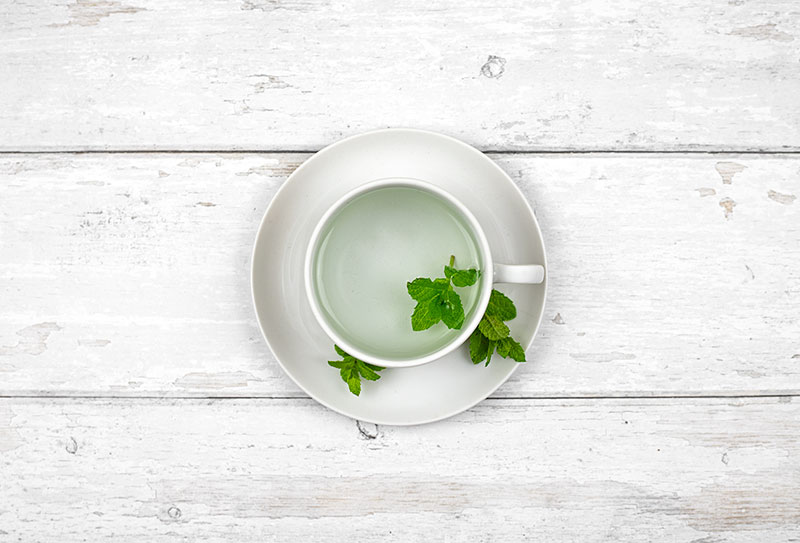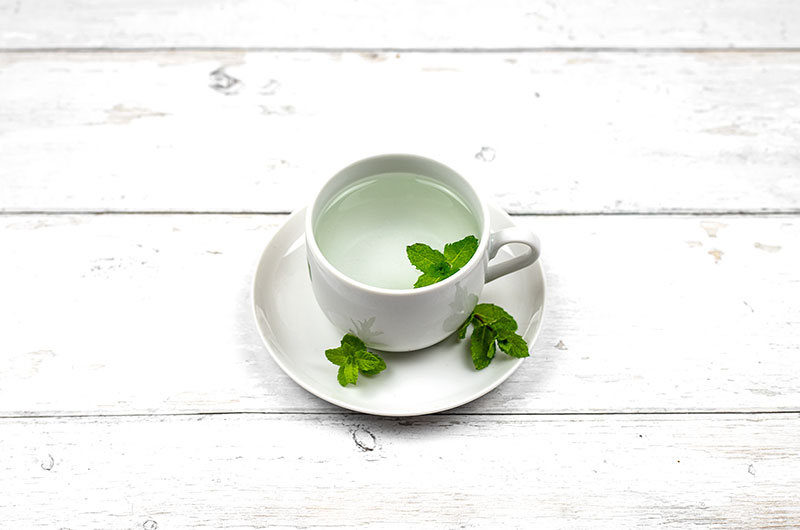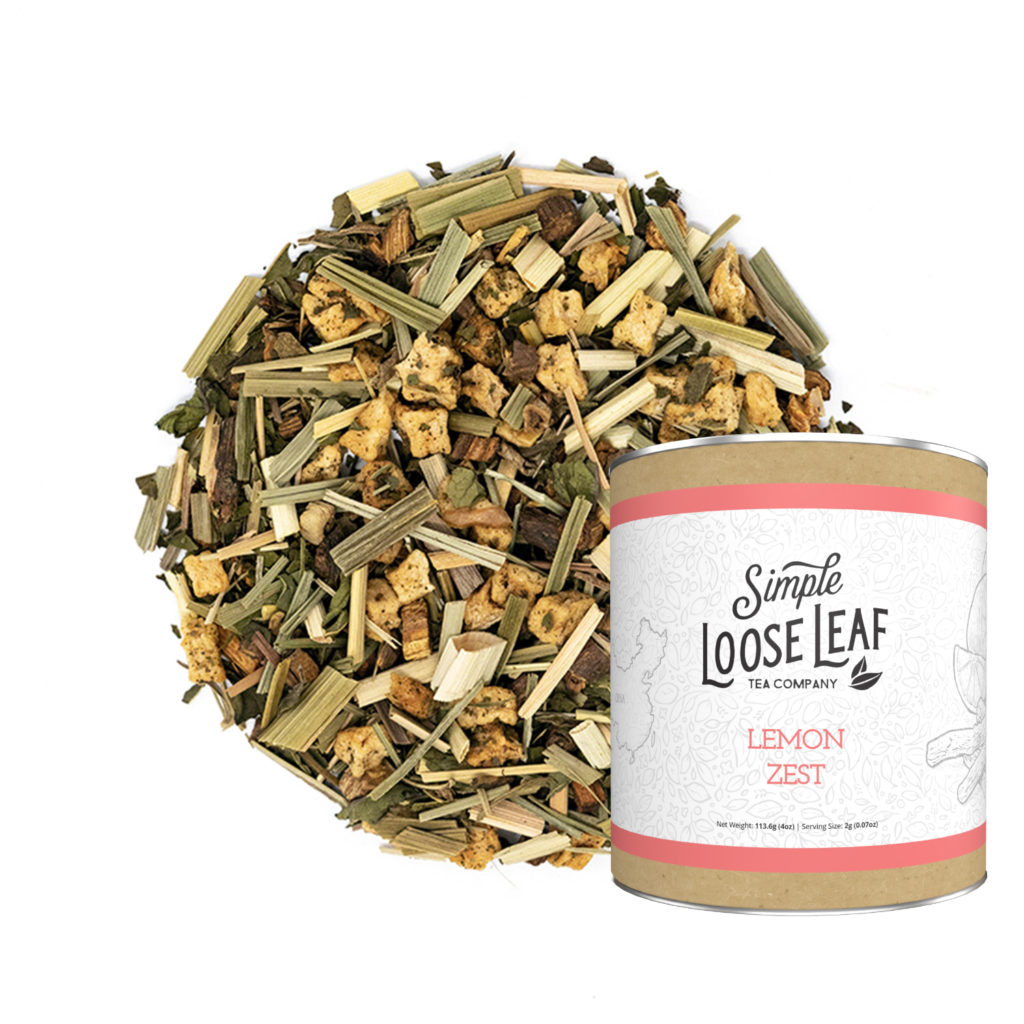Different Types of Mint Tea and their Benefits

Hot or cold, pure or blended, nothing can beat a cup of freshly made mint tea. It’s by far one of the most refreshing herbal teas in the world. Drinking mint tea is far more than just a simple pastime – many tea cultures and traditions wouldn’t be the same without it.
Read what is hidden behind the word „mint tea“ and what are the benefits of different mint teas.
What is mint tea?
When someone offers you a cup of mint tea, the first association that comes into your mind may be the refreshing cooling flavor. The cooling sensation in mint teas comes from menthol, an organic compound found in mentha genus of mint family. In a biological sense, mint is a family of many plants that includes much more than just what we call mint teas. Peppermint and spearmint, two of the most popular mint teas, both belong to mentha genus, and both contain menthol. However, some other herbs, such as sage or lemon balm, also belong to the mint family. They lack the cooling note, because they don’t contain menthol. In fact, the whole mint family includes over 7000 plants[1].
Mint has been around for centuries. Although some mint types such as peppermint are new, others, such as spearmint, have been well known even in the Ancient Greece[2].
Interesting fact: The word menthe is associated to the Green nymph Minthe[3].
Mentha
Mentha genus contains 25 different plants[4], all of them with a specific minty scent and flavor. The most popular ones, peppermint and spearmint, are widely used for making tea. However, others like filed mint or water mint may also be included in different mint blends.

Peppermint (Mentha × piperita)
Peppermint tea is the most consumed herbal tea in the world[5]. However, peppermint is not an old plant. It’s a crossbreed of spearmint and water mint. Research showed that peppermint oil may have anywhere between 33-60% of menthol, well recognizable by the minty sharp and cooling taste. Peppermint is the main ingredient of Moroccan Mint tea. Morocco is the largest producer of peppermint in the world – 92.7% of the total world production[6].
Peppermint has anti oxidative properties, may help with freshening breath, aiding digestion and may help with some types of flu. For a full list of benefits, click here.
Spearmint (Mentha spicata)
Spearmint, although it belongs to the same biological genus, is less sharp and more sweet. This is because the menthol content is much lower than in peppermint. In some spearmint plants it may even be absent comepletely[7]. Peppermint may have anti oxidant, antiviral, antimicrobial and antitumor activities[8]. Studies showed that spearmint may be beneficial for improving memory,[9] respiratory system, relieving pain[10] and dealing with allergies.
Field mint (Mentha arvensis)
Field mint or wild mint is another mint widely used for cooking and making tea. It has high levels of menthol and shares similar benefits to peppermint. Field mint has antibacterial, anti oxidative and anti stress properties[11].
Water Mint (Metha aquatica)
Another commonly used mint is water mint. It has similar benefits as other mints, including antimicrobial, antioxidant, anti-inflammatory, and antiallergic properties[12].
Lemon Balm and Sage
Both lemon balm and sage also belong to a mint family. While the flavor of lemon balm may give an impression that this plant is a distant relative of the regular mint teas, sage is much more different. It’s interesting that both of them share the most important health benefits with real mint teas. They may be used for digestive problems and dealing with stress.
The most popular Mint tea blends
Although mint tastes delicious on its own, it popular in many blends, and an integral part of some tea cultures around the world. Many mint blends are available in loose leaf style and taste better when made from high quality teas and herbs.
If you want to try out tea blending with fresh herbs, mint is one of the easiest herbs to grow, and widely available potted in small pots. Peppermint or spearmint, whichever mint you use, you will be able to enjoy delicious refreshing and cooling flavor. However, for a lighter and sweeter flavor, opt for spearmint leaves, and for the cooler and sharper taste, peppermint will be the best.
1. Moroccan Mint tea
Moroccan mint tea is a blend of strong green tea and mint. Although originally made with loose leaf tea, Morrocan mint tea is so popular that today it’s widely available in tea bags too. Try making your own mint tea with stronger Pinhead Gunpowder or Chunmee tea and adding mint leaves. For the most delicious cup ever, use fresh peppermint leaves. Tunisian mint tea is very similar to the Moroccan one, and may include pine nuts as well.
2. Chocolate Mint tea
Chocolate and mint is a combination that doesn’t only taste great in chocolate. Black tea, chocolate drops and mint, chocolate black tea and mint or earthy rooibos with mint leaves and cocoa shells may all give the same flavorful experience.
3. Apple Mint tea
Sweet and fresh flavors of apple and mint create one of the most perfect iced teas ever. You can experiment with mint tea and apple juice, dry apple pieces and mint or even with fresh ingredients.
4. Lemon Mint tea
Mint goes well with both lemons and herbs with a lemony flavor–such as lemon balm or lemongrass. For a refreshing caffeine boost, add some green tea to the blend. Gunpowder, Chunmee, Chinese sencha or Indian black teas are all great options.

Lemon Zest herbal tea with peppermint
5. Mint Ginger tea
When warming and cooling ingredients combine, a result can be nothing less than an intriguing and well-balanced cup of tea. It can be made from both fresh mint leaves and fresh ginger or dry ingredients.
How to brew mint tea
Mint tea is very easy to brew, both with fresh and dry ingredients. Use fresh spring water and bring it to a boil. If you are using fresh mint, wash it before brewing. Use about 1 teaspoon of dry tea or 2-3 small mint branches per cup of water. Steep for 3-5 minutes. For a more intense flavor, crush the mint leaves before steeping.
Extra idea: Turn your regular cup of mint tea into a latte. The best tasting lattes will either contain strong black, oolong or green tea, or stronger herbal blends that taste good with milk.
Disclaimer: This article is for informational purposes only. It’s not intended to replace medical advice, diagnosis or treatment. Every person is different and may react to different herbs and teas differently. Never use teas or herbs to treat serious medical conditions on your own. Always seek professional medical advice before choosing home remedies.
References:
[1] https://www.britannica.com/plant/Lamiaceae
[2] http://www.ourherbgarden.com/herb-history/mint.html
[3] https://www.greeklegendsandmyths.com/minthe.html
[4] https://www.britannica.com/plant/Mentha
[5] https://www.researchgate.net/publication/267031227_A_Review_of_the_bioactivity_and_potential_health_benefits_of_peppermint_tea_Mentha_piperita_L
[6] https://www.tridge.com/intelligences/mint/production
[7] https://www.ncbi.nlm.nih.gov/pmc/articles/PMC6274304/
[8] https://www.ncbi.nlm.nih.gov/pubmed/16767798
[9] https://www.ncbi.nlm.nih.gov/pmc/articles/PMC5779242/
[10] https://www.ncbi.nlm.nih.gov/pubmed/16767798
[11] https://www.ncbi.nlm.nih.gov/pmc/articles/PMC5855577/
[12] https://www.sciencedirect.com/science/article/pii/B9780128146255000145



